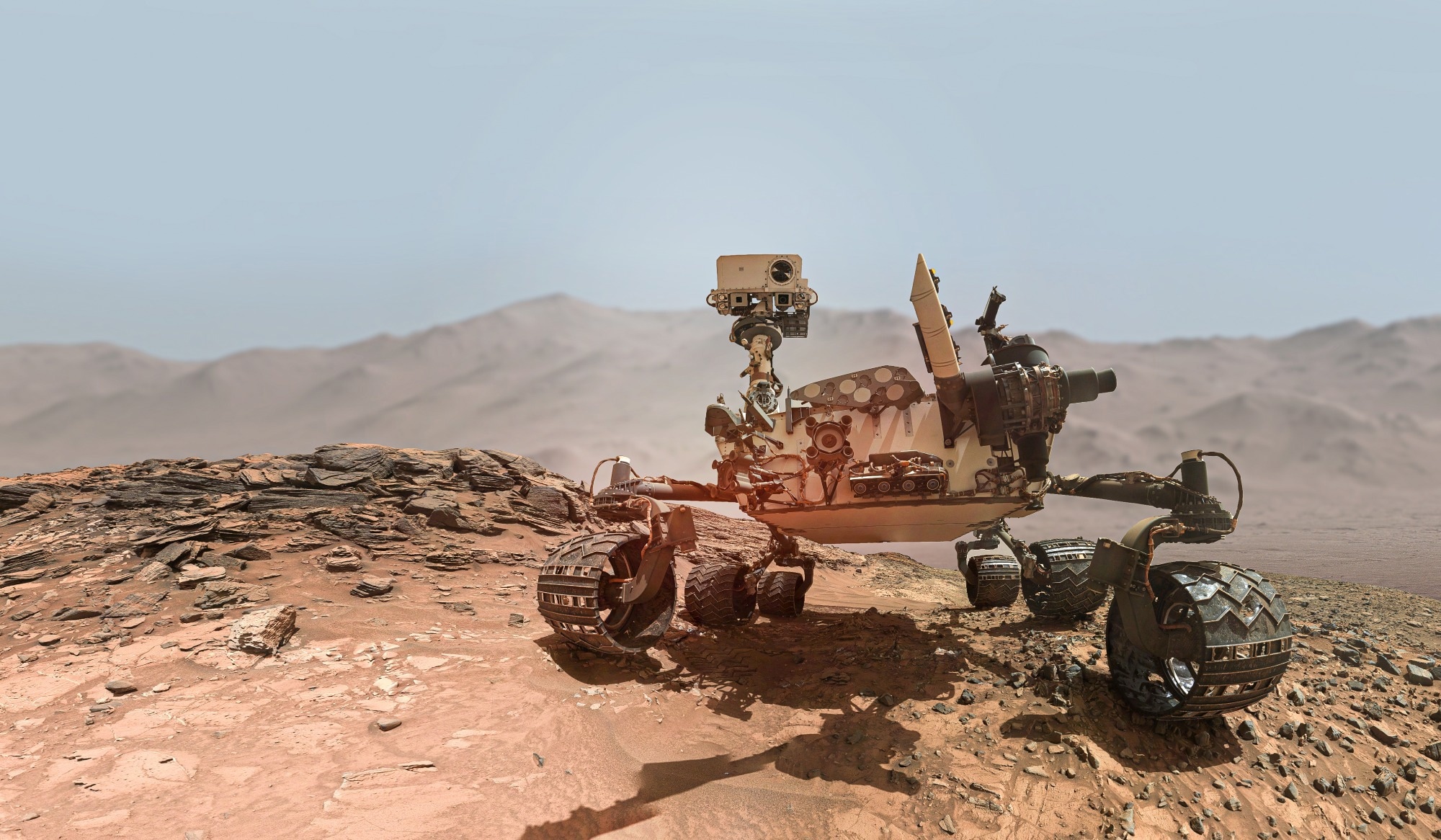
Image Credit: Dima Zel/Shutterstock.com
Perseverance reached the western rim of Jezero Crater after a 3½-month climb, arriving at a slope known as “Witch Hazel Hill.” The area has quickly proven to be one of the mission’s most scientifically productive sites.
Since arriving, the rover has cored five rocks, sealed three samples, and analyzed around 90 more using its suite of laser and close-up imaging tools - its most rapid science collection phase since landing.
The rim’s rocky landscape includes everything from fragmented molten debris - likely remnants of ancient meteor impacts - to well-preserved layered formations. Some of these, like the "Tablelands" sample, contain serpentine minerals, which form when water interacts with iron- and magnesium-rich volcanic rock.
These types of minerals are particularly intriguing because they suggest Mars once had conditions favorable for microbial life.
Unlocking Mars’ Geological Past
The rocks scattered along Jezero’s rim reveal a dramatic history of meteor strikes, volcanic activity, and water-rock interactions. One standout is “Silver Mountain,” sampled in January 2025. Scientists believe this rock dates back to Mars’ Noachian period, over 3.9 billion years ago, and was likely shattered and recrystallized by a powerful meteor impact.
Nearby, the rover examined an outcrop containing igneous minerals thought to originate deep in Mars’ crust. Although this rock proved too brittle for successful coring, its composition hints at complex volcanic processes that shaped the Red Planet’s surface in ancient times.
The next major target was “Tablelands,” a rock made almost entirely of serpentine. This mineral forms through serpentinization - a reaction between water and iron-rich volcanic rock that produces gases like hydrogen and methane. On Earth, these gases can sustain microbial life, making the discovery especially significant.
However, preserving the sample wasn’t easy. Engineers spent 13 Martian days carefully clearing rock dust from the sample tube using brushes and a specialized “flick maneuver” before achieving a clean seal. Their persistence ensured that this promising sample would make it back to Earth intact.
Scientific Impact and What’s Next
The range of rock types found at Witch Hazel Hill has broadened scientists’ understanding of Mars’ geological complexity. One recent sample, “Main River,” collected in March 2025, features unique banding patterns that suggest cyclical deposition - possibly tied to past climate fluctuations or flowing water.
At the same time, the serpentine-rich Tablelands sample strengthens the case that Jezero Crater experienced prolonged water activity - a key requirement for habitability.
These discoveries are more than just scientifically interesting - they’re essential for the success of NASA’s Mars Sample Return (MSR) mission, which aims to bring selected Martian samples back to Earth for detailed laboratory analysis.
Back on Earth, researchers will be able to search for subtle chemical markers of past life and identify the periods when Mars was most likely to have supported it. And as Perseverance continues exploring Witch Hazel Hill, even more potential sampling sites are under consideration.
Conclusion
Perseverance’s work along Jezero Crater’s rim continues to yield meaningful discoveries - from ancient volcanic fragments to water-altered serpentine rocks. These findings offer a clearer view of Mars’ early evolution and its potential to have once-supported life.
Despite occasional technical hurdles, the mission keeps moving forward, collecting high-value samples for future return.
As the rover advances, each new rock tells a deeper story of the Red Planet’s past, highlighting the scientific value of crater rims in planetary exploration.
Reference
NASA’s Perseverance Mars Rover Studies Trove of Rocks on Crater Rim - NASA. (2025, April 10). NASA. https://www.nasa.gov/missions/mars-2020-perseverance/perseverance-rover/nasas-perseverance-mars-rover-studies-trove-of-rocks-on-crater-rim/
Disclaimer: The views expressed here are those of the author expressed in their private capacity and do not necessarily represent the views of AZoM.com Limited T/A AZoNetwork the owner and operator of this website. This disclaimer forms part of the Terms and conditions of use of this website.